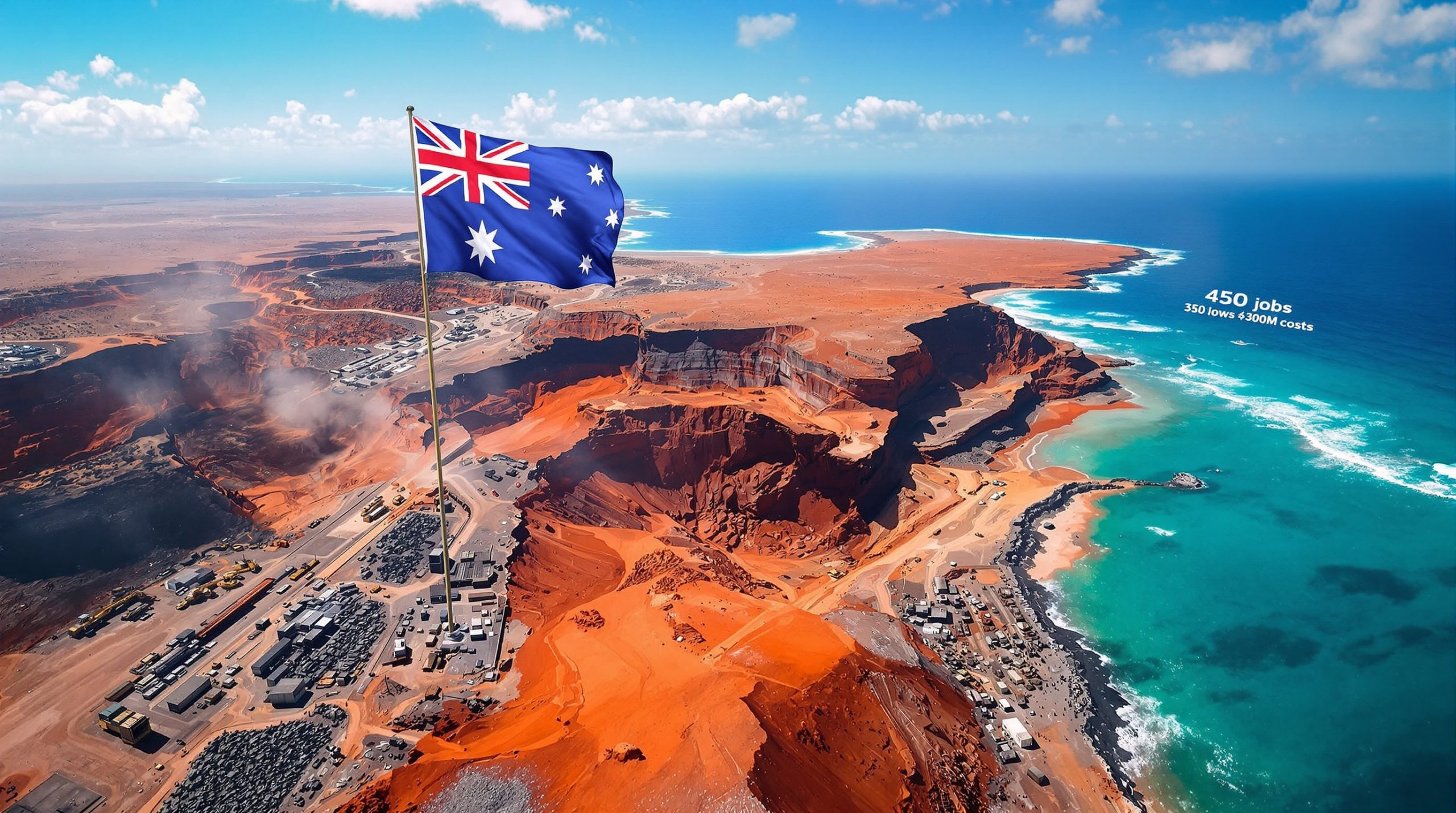Understanding the Strategic Framework Behind the $8.5 Billion Investment
The bilateral critical minerals agreement represents a fundamental shift in how democratic nations approach resource security. This comprehensive partnership establishes a joint investment framework targeting $8.5 billion in combined funding to strengthen supply chain resilience for materials essential to modern technology and defense systems.
Industry leaders gathered at the International Mining and Resources Conference (IMARC) 2025 witnessed unprecedented optimism following this landmark announcement. The US and Australia critical minerals deal creates opportunities that extend far beyond initial expectations, with immediate implications for mining companies, investors, and technology suppliers across both nations. Furthermore, this agreement builds upon existing critical minerals energy security frameworks whilst implementing a big pivot strategy toward supply chain independence.
Key Investment Breakdown:
- Immediate commitment: $3 billion already allocated
- Six-month timeline: Additional $1 billion from each nation
- Total framework value: $8.5 billion over multiple years
- Focus areas: Mining, processing, refining, and manufacturing
Which Critical Minerals Are Prioritised Under This Agreement?
The partnership specifically targets materials crucial for electric vehicle batteries, renewable energy infrastructure, and advanced defence technologies. Priority minerals include lithium, rare earth elements, gallium, cobalt, and graphite, with particular emphasis on materials where China currently dominates global processing capacity.
Strategic Mineral Categories:
- Battery minerals: Lithium, cobalt, nickel for EV production
- Defence materials: Gallium for semiconductors and radar systems
- Rare earth elements: Neodymium, dysprosium for permanent magnets
- Processing chemicals: Specialised compounds for mineral separation
The agreement addresses a critical vulnerability in Western supply chains. Currently, China controls approximately 60-90% of global refining capacity for key materials, creating strategic dependencies that the partnership aims to reduce through diversified sourcing and processing capabilities. This aligns with Australia's broader defense materials strategy and complements recent US initiatives, including the executive order on minerals.
How Will the US-Australia Supply Security Response Group Function?
A joint governance structure led by the US Secretary of Energy and Australian Minister for Resources will oversee project selection and implementation. This bilateral committee will identify priority investments, accelerate permitting processes, and coordinate financing mechanisms across both jurisdictions.
Operational Framework:
| Function | US Leadership | Australian Leadership |
|---|---|---|
| Project Selection | Department of Energy | Department of Resources |
| Financing Coordination | Development Finance Corporation | Export Finance Australia |
| Regulatory Streamlining | Defense Production Act | Critical Minerals Strategy |
| Supply Chain Mapping | USGS | Geoscience Australia |
The framework enables rapid decision-making through streamlined approval processes. Projects receiving partnership backing can leverage existing policy mechanisms, including the US Defense Production Act for strategic materials and Australia's Critical Minerals Strategic Reserve program. Additionally, this framework follows similar models being established globally, including the European supply facility initiatives.
What Are the First Major Projects Receiving Investment?
Two flagship initiatives demonstrate the partnership's immediate impact on global supply chains, with both projects targeting materials where supply security remains critical for Western economies.
Alcoa-Sojitz Gallium Recovery Project
Located in Western Australia, this facility will process alumina refinery byproducts to extract gallium, a critical semiconductor material. The project receives $200 million in concessional equity from Australia, with additional US and Japanese investment creating a trilateral cooperation model.
Project Specifications:
- Global supply contribution: Up to 10% of worldwide gallium production
- Strategic importance: Essential for defence radar and 5G infrastructure
- Processing capacity: Targeting commercial-scale gallium recovery
- Timeline: Production expected within 24 months
Gallium represents a particularly strategic material, as current global production relies heavily on Chinese aluminium smelting operations. The Western Australian facility will utilise existing alumina infrastructure, creating cost efficiencies whilst establishing secure supply chains for defence and telecommunications applications.
Arafura Nolans Rare Earths Development
The Northern Territory project represents one of the most significant rare earth developments outside China. With $100 million in partnership funding, it will produce neodymium and praseodymium for permanent magnet applications essential to wind turbines and electric vehicle motors.
Development Metrics:
- Global market share: 5% of worldwide rare earth production
- Reserve base: Estimated 56 million tonnes of rare earth oxide
- Processing capability: Integrated mining and separation facility
- Export potential: Direct supply to US and allied manufacturers
The Nolans project addresses specific vulnerabilities in rare earth supply chains. Unlike many projects that focus solely on mining, this development includes on-site separation and processing capabilities, reducing dependence on Chinese refining infrastructure.
How Does This Partnership Address China's Market Dominance?
The agreement directly responds to China's control over critical mineral processing, which currently represents 80% of rare earth processing globally. By establishing alternative supply chains, the partnership reduces strategic vulnerabilities in technology and defence sectors whilst creating competitive alternatives for downstream manufacturers.
Supply Chain Diversification Strategy:
- Current dependency: 80% of rare earth processing in China
- Partnership goal: 25% reduction in Chinese reliance by 2030
- Alternative sources: Australian mining with US processing capabilities
- Technology transfer: Shared expertise in mineral separation techniques
Industry experts at IMARC 2025 noted the strategic importance of this diversification. The partnership creates competitive pressure on Chinese processors whilst establishing secure supply chains for Western manufacturers, potentially stabilising prices and reducing supply disruption risks.
What Financial Mechanisms Support Project Development?
The partnership leverages existing policy frameworks whilst creating new financing instruments specifically for critical mineral projects. This multi-layered approach combines government backing with private sector investment to accelerate development timelines.
US Financing Tools:
- Defense Production Act: Fast-track approval for strategic projects
- Development Finance Corporation: Concessional loans and equity investments
- Strategic reserves: Government stockpiling agreements
Australian Support Mechanisms:
- Critical Mineral Strategic Reserve: $1.2 billion investment program
- Export Finance Australia: Project financing and risk mitigation
- Northern Australia Infrastructure Facility: Regional development funding
The financing structure addresses traditional challenges in critical mineral development, where long payback periods and technical risks often deter private investment. Government backing through concessional financing and offtake agreements provides the certainty needed for project development. This approach mirrors the comprehensive strategy outlined in the United States-Australia Framework for Securing of Supply in the Mining and Processing of Critical Minerals and Rare Earths.
Which Australian Companies Stand to Benefit Most?
Major resource companies with established operations and development pipelines are positioned to capitalise on increased investment flows and strategic partnerships. The partnership creates opportunities across the mineral value chain, from exploration through to processing and manufacturing.
Potential Beneficiaries:
- Lynas Rare Earths: Existing rare earth processing capabilities and Malaysian operations
- Pilbara Minerals: Lithium concentrate production expansion opportunities
- Mineral Resources: Integrated lithium processing development projects
- Iluka Resources: Rare earth and zircon processing expertise
Smaller exploration companies specialising in critical minerals also anticipate benefits from increased investor interest and funding availability. Industry participants at IMARC expressed optimism that rising investment could create opportunities across the sector, not just for established producers.
Investment Disclaimer: Investment decisions should consider individual project fundamentals, market conditions, and company-specific risk factors beyond partnership benefits. Past performance does not guarantee future results.
How Will This Agreement Impact Global Critical Mineral Markets?
The partnership's scale and strategic focus will likely influence pricing dynamics, investment patterns, and supply chain configurations across multiple mineral markets. The $8.5 billion commitment represents one of the largest strategic investments in critical mineral security to date.
Market Implications:
- Price stabilisation: Reduced volatility through diversified supply sources
- Investment acceleration: Increased capital flows to Australian projects
- Technology advancement: Joint research and development initiatives
- Supply security: Enhanced reliability for downstream manufacturers
Market analysts suggest the partnership could create demonstration effects, encouraging other nations to develop similar strategic frameworks. This could accelerate global investment in critical mineral projects and reduce market concentration risks.
What Are the Long-Term Strategic Objectives?
Beyond immediate project funding, the partnership establishes a framework for sustained cooperation in critical mineral security, technology development, and supply chain resilience. The agreement creates institutional mechanisms for ongoing collaboration between governments and industry.
Five-Year Goals:
- Processing capacity: 30% increase in allied nation mineral processing
- Technology leadership: Advanced separation and recycling capabilities
- Supply chain integration: Seamless US-Australia material flows
- Global influence: Model for other democratic partnerships
The strategic objectives extend beyond resource security to include technology development and industrial capacity building. Joint research initiatives will focus on improving processing efficiency, developing recycling capabilities, and creating next-generation separation technologies.
How Does This Compare to Other International Critical Mineral Initiatives?
The US-Australia critical minerals deal represents the most comprehensive bilateral framework for strategic materials, exceeding previous partnerships in scope, funding, and operational integration. The agreement serves as a model for other democratic alliances seeking supply chain security.
Comparative Analysis:
| Partnership | Investment Scale | Operational Scope | Timeline |
|---|---|---|---|
| US-Australia | $8.5 billion | Mining to manufacturing | 5+ years |
| US-Canada | $2.5 billion | Processing focus | 3 years |
| EU-Africa | $3 billion | Development assistance | 7 years |
| Japan-Australia | $1.8 billion | Technology cooperation | 4 years |
The comprehensive nature of this partnership, covering everything from exploration through to end-user manufacturing, distinguishes it from other international agreements that typically focus on specific segments of the value chain. According to Reuters reporting, this framework was discussed during the first Trump-Albanese summit, highlighting its strategic importance.
What Challenges Could Affect Implementation Success?
Whilst the partnership creates significant opportunities, several factors could influence project delivery timelines and outcomes. Industry participants at IMARC identified both technical and regulatory challenges that require careful management.
Implementation Considerations:
- Regulatory coordination: Aligning approval processes across jurisdictions
- Environmental compliance: Meeting sustainability standards for new developments
- Skilled workforce: Developing technical expertise for advanced processing
- Infrastructure requirements: Transportation and power supply adequacy
Technical challenges include developing processing capabilities for complex ore bodies and establishing quality control systems for strategic materials. Environmental and social considerations require careful management to ensure project sustainability and community acceptance.
Industry Response and Market Sentiment
The response from industry participants at IMARC 2025 reflected widespread optimism about the partnership's potential impact. Association of Mining and Exploration Companies (AMEC) leadership emphasised that the agreement exceeded initial expectations, providing both high-level strategic framework and immediate investment commitments.
The mining equipment, technology and services (METS) sector expressed particular enthusiasm about face-to-face engagement opportunities. Companies specialising in bearings, seals, lubrication systems, and digital solutions identified new business development prospects arising from increased mining activity and technological advancement requirements.
International delegations, including record-breaking US representation at IMARC, demonstrated global interest in Australian critical mineral opportunities. This international engagement suggests strong potential for additional partnerships and investment flows beyond the initial bilateral framework.
Technology and Innovation Focus
The partnership emphasises digitalisation and artificial intelligence applications in mineral processing and extraction. Industry leaders highlighted the importance of maximising equipment performance and plant efficiency to meet growing demand whilst controlling costs and reducing environmental impact.
Advanced separation technologies, recycling capabilities, and automated processing systems represent key areas for joint research and development. These technological advances could provide competitive advantages whilst supporting environmental sustainability objectives.
The US and Australia critical minerals deal represents a strategic realignment of global supply chains, prioritising security and resilience over cost optimisation alone. Success will depend on effective project execution, sustained political support, and continued cooperation between government and industry stakeholders across both nations.
Industry Outlook: The partnership creates a foundation for long-term supply chain security whilst establishing Australia as a preferred supplier for strategic materials. Market participants anticipate continued investment acceleration as projects demonstrate commercial viability and strategic value.
Looking to Capitalise on Critical Mineral Investment Opportunities?
Discovery Alert's proprietary Discovery IQ model delivers real-time alerts on significant ASX mineral discoveries, instantly identifying actionable opportunities in critical minerals sectors ahead of the broader market. With this historic $8.5 billion partnership creating unprecedented demand for Australian critical mineral projects, subscribers gain crucial insights to position themselves strategically before major announcements move markets.




